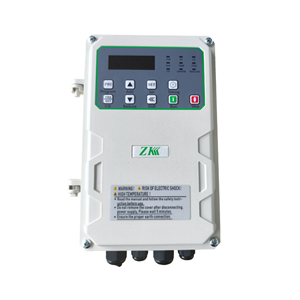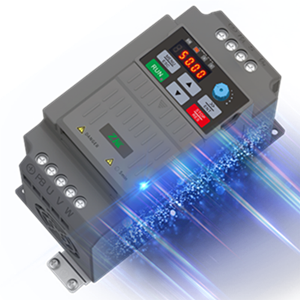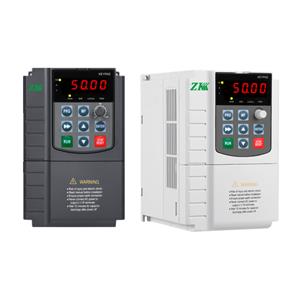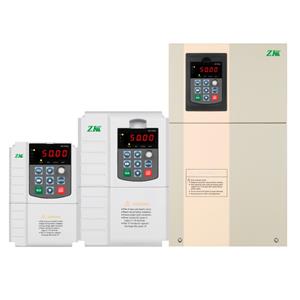A brief history of global photovoltaic development
A historical review helps us understand the development of photovoltaic technology. Here, in chronological order, are the historical events related to the development of solar cells:
Since the discovery of the photovoltaic effect (also known as the photovoltaic phenomenon) in liquids by French scientist E. Becquerel in 1839, solar cells have undergone a long development history spanning over 160 years.
Overall, both basic research and technological advancement have played a positive role in promoting solar cell development. The successful development of single-crystal silicon solar cells by three scientists at Bell Labs in the United States played a decisive role in the practical application of solar cells. This marked a milestone in the history of solar cell development. To date, the basic structure and mechanism of solar cells have remained unchanged.
In 1877, W.G. Adams and R.E. Day studied the photovoltaic effect of selenium (Se) and created the first selenium solar cell.
In 1883, American inventor Charles Fritts described the principle of the first selenium solar cell.
In 1904, Hallwachs discovered that the combination of copper and cuprous oxide (Cu/Cu2O) possesses photosensitivity; German physicist Albert Einstein published a paper on the photoelectric effect.
In 1918, Polish scientist Czochralski developed the Czochralski method for growing single crystal silicon.
In 1921, German physicist Albert Einstein won the Nobel Prize in Physics for his 1904 theory explaining the photoelectric effect.
In 1930, B. Lang studied cuprous oxide/copper solar cells and published the paper "A New Type of Photovoltaic Cell." W. Schottky published the paper "A New Type of Cuprous Oxide Photovoltaic Cell."
In 1932, Audobert and Stora discovered the photovoltaic effect of cadmium sulfide (CdS).
In 1933, L.O. Grondahl published the paper "Copper-cuprous oxide rectifiers and photocells."
In 1941, Orr discovered the photovoltaic effect on silicon.
In 1951, p-n junctions were grown, enabling the fabrication of single-crystal germanium solar cells.
In 1953, Dr. Dan Trivich of Wayne State University completed the first theoretical calculation of the photovoltaic efficiency of various materials with different band gap widths based on solar energy.
In 1954, P. Rappaport and others at RCA Laboratories reported the photovoltaic effect of cadmium sulfide (RCA: Radio Corporation of America).
Bell Laboratories researchers D.M. Chapin, C.S. Fuller, and G.L. Pearson reported the discovery of a single-crystal silicon solar cell with a 4.5% efficiency, which reached 6% a few months later.
In 1955, Western Electric began selling commercial patents for silicon photovoltaic technology. An international solar energy conference was held at the University of Arizona. Hoffman Electronics launched a commercial solar cell product with a 2% efficiency, 14mW per cell, and a price of $25 per cell, equivalent to $1,785 per watt.
In 1956, P. Pappaport, J. J. Loferski, and E. G. Linder published an article titled "Electronic Current Effects in Germanium and Silicon p-n Junctions."
In 1957, Hoffman Electronics achieved an 8% efficiency for its single-crystal silicon cell. D. M. Chapin, C. S. Fuller, and G. L. Pearson received patents for their "Solar Energy Conversion Device."
In 1958, T. Mandelkorn of the U.S. Signal Corps developed n/p-type monocrystalline silicon photovoltaic cells, which have high radiation resistance, making them crucial for space batteries. Hoffman Electronics achieved a 9% efficiency in monocrystalline silicon cells. The first photovoltaic cell-powered satellite, Pioneer 1, was launched, featuring a 100cm² photovoltaic cell with a power output of 0.1W, used to power a backup 5mW microphone.
In 1959, Hoffman Electronics achieved a commercial monocrystalline silicon cell efficiency of 10%, significantly reducing the cell's series resistance by using a grid electrode. The Explorer 6 satellite was launched, featuring an array of 9,600 solar cells, each 2cm², totaling 20W.
In 1960, Hoffman Electronics achieved a 14% efficiency in monocrystalline silicon cells.
In 1962, the first commercial communications satellite, Telstar, was launched, using 14W solar cells.
In 1962, the first commercial communications satellite, Telstar, was launched, using 14W solar cells.
In 1962, the first commercial communications satellite, Telstar, was launched, using 14W solar cells.
In 1963, Sharp Corporation successfully produced photovoltaic cell modules; Japan installed a 242W photovoltaic array on a lighthouse, the world's largest at the time.
In 1964, the spacecraft "Numberland" was launched, equipped with a 470W photovoltaic array.
In 1965, Peter Glaser and A.D. Little proposed the concept of a satellite solar power station.
In 1966, a large-scale orbiting astronomical observatory equipped with a 1000W photovoltaic array was launched.
In 1972, French researchers installed a cadmium sulfide photovoltaic system in a rural school in Niger to power educational television.
In 1973, the University of Delaware in the United States built the world's first photovoltaic house.
In 1974, Japan launched its "Sunshine Project" for photovoltaic power generation. Tyco Laboratories grew the first EFG crystalline silicon ribbon, 25mm wide and 457mm long (EFG stands for Edge Defined Film Fed-Growth).
In 1977, global photovoltaic cell production exceeded 500 kW. D.E. Carlson and C.R. Wronski, building on W.E. Spear's 1975 work on controlling the p-n junction, developed the world's first amorphous silicon (a-Si) solar cell.
In 1979, global installed solar cell capacity reached 1 MW.
In 1980, ARCO Solar became the first photovoltaic cell manufacturer to achieve an annual production capacity of 1 MW. Sanyo Electric pioneered the use of amorphous silicon cells in a handheld pocket calculator and subsequently completed mass production of amorphous silicon modules and conducted outdoor testing.
In 1981, a photovoltaic-powered aircraft named Solar Challenger successfully flew.
In 1982, global annual solar cell production exceeded 9.3 MW. In 1983, the world's annual solar cell production exceeded 21.3MW. A 1kW photovoltaic-powered car called the SolarTrek crossed Australia, covering 4,000km in 20 days.
In 1984, a commercial amorphous silicon solar cell module with an area of 929cm2 was introduced.
In 1985, the price of monocrystalline silicon solar cells reached 10 USD/W. Martin Green at the University of New South Wales, Australia, developed a monocrystalline silicon solar cell with an efficiency of 20%.
In June 1986, ARCO Solar released the G-4000, the world's first commercial thin-film solar cell "power module."
In November 1987, the GM Sunraycer won the Pentax World Solar Challenge PV-powered car race, covering 3,100km across Australia, with an average speed of approximately 71km/h.
In 1990, the world's annual solar cell production exceeded 46.5MW.
In 1991, the world's annual solar cell production exceeded 55.3 MW; the nano-TiO2 dye-sensitized solar cell developed by Swiss Professor Gratzel achieved an efficiency of 7%.
In 1992, the world's annual solar cell production exceeded 57.9 MW.
In 1993, the world's annual solar cell production exceeded 60.1 MW.
In 1994, the world's annual solar cell production exceeded 69.4 MW.
In 1995, the world's annual solar cell production exceeded 77.7 MW; the total installed capacity of photovoltaic cells reached 500 MW.
In 1996, the world's annual solar cell production exceeded 88.6 MW.
In 1997, the world's annual solar cell production exceeded 125.8 MW.
In 1998, the world's annual solar cell production exceeded 151.7 MW; the production of polycrystalline silicon solar cells exceeded that of monocrystalline silicon solar cells for the first time.
In 1999, the world's annual solar cell production exceeded 201.3 MW. M.A. Contreras et al. of the US National Research Laboratory (NREL) reported that copper indium tin (CIS) solar cell efficiency reached 18.8%, and amorphous silicon solar cells accounted for 12.3% of the market share.
In 2000, the world's annual solar cell production exceeded 399 MW. Wu X., Dhere R.G., Aibin D.S. et al. reported that cadmium telluride (CdTe) solar cell efficiency reached 16.4%, and the price of monocrystalline silicon solar cells was approximately 3 USD/W.
In 2002, the world's annual solar cell production exceeded 540 MW. The price of polycrystalline silicon solar cells was approximately 2.2 USD/W.
In 2003, the world's annual solar cell production exceeded 760 MW. Fraunhofer ISE in Germany achieved an efficiency of 20% for its LFC (laser-fired-contact) crystalline silicon solar cells.
In 2004, global annual solar cell production exceeded 1,200 MW. Fraunhofer ISE, Germany, reported a polycrystalline silicon solar cell efficiency of 20.3%. Amorphous silicon solar cells accounted for 4.4% of the market share, down to one-third of their 1999 level. CdTe accounted for 1.1%, and CIS for 0.4%.
In 2005, global annual solar cell production reached 1,759 MW.




